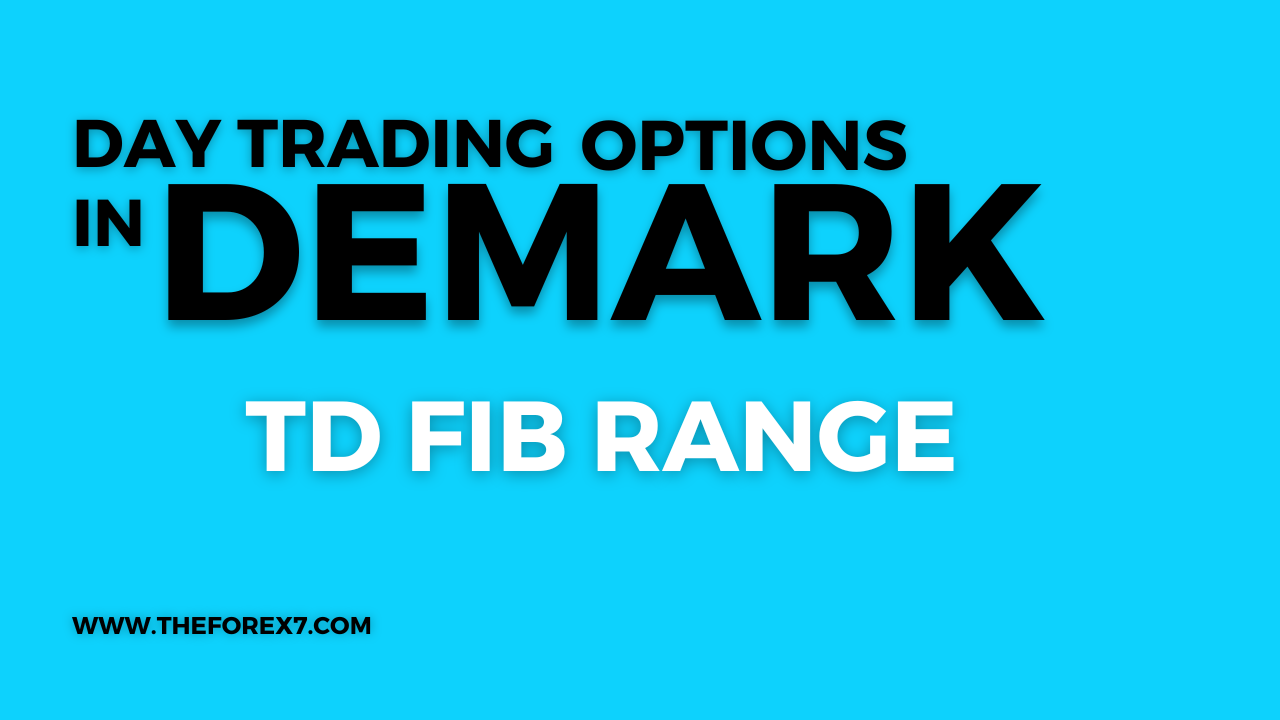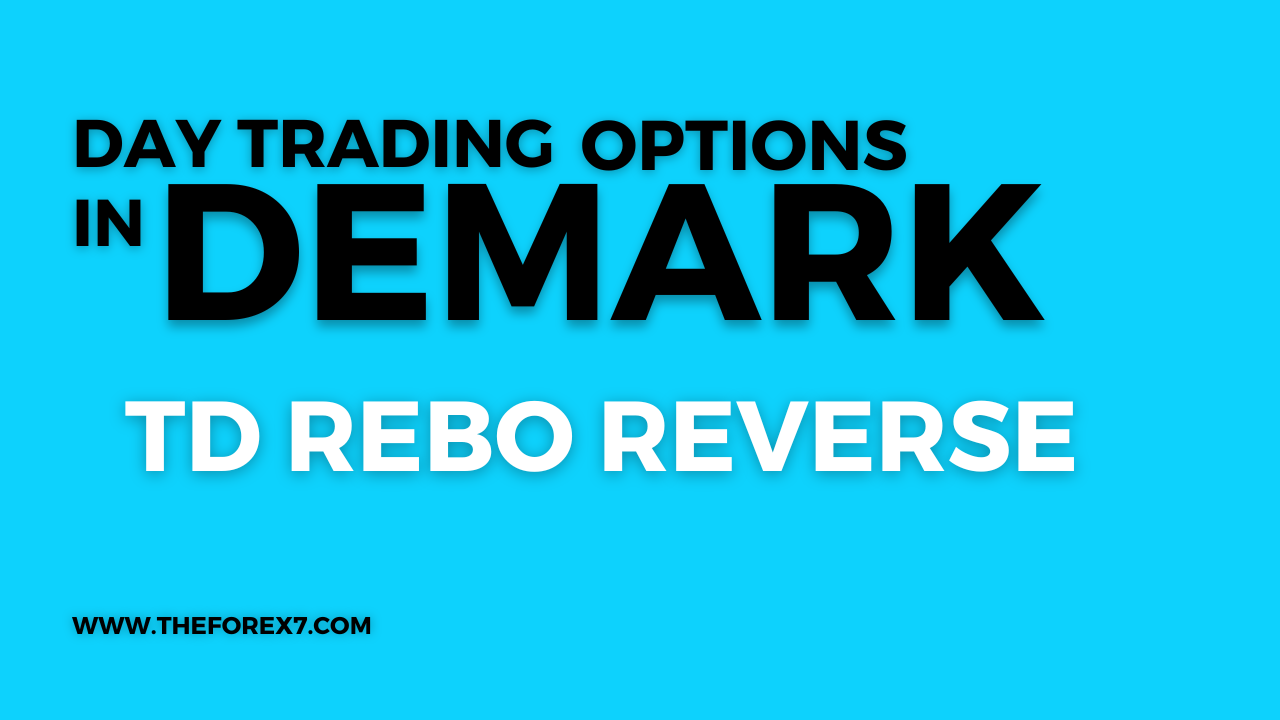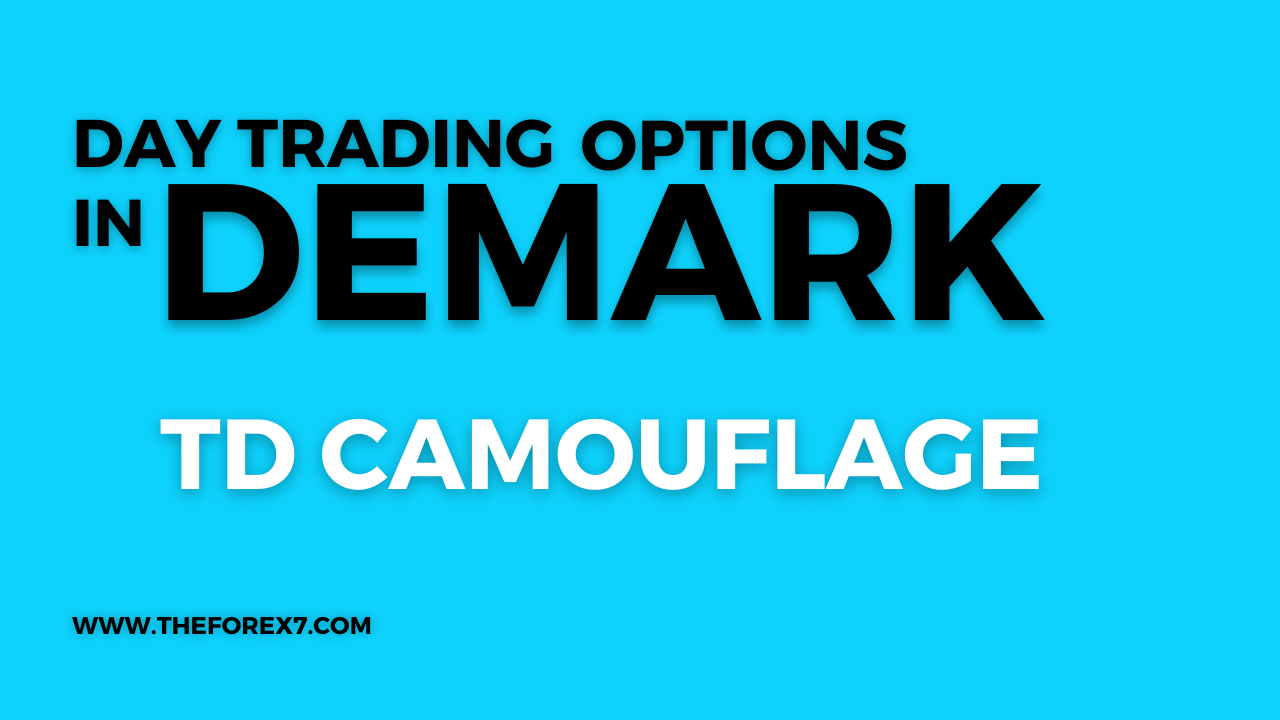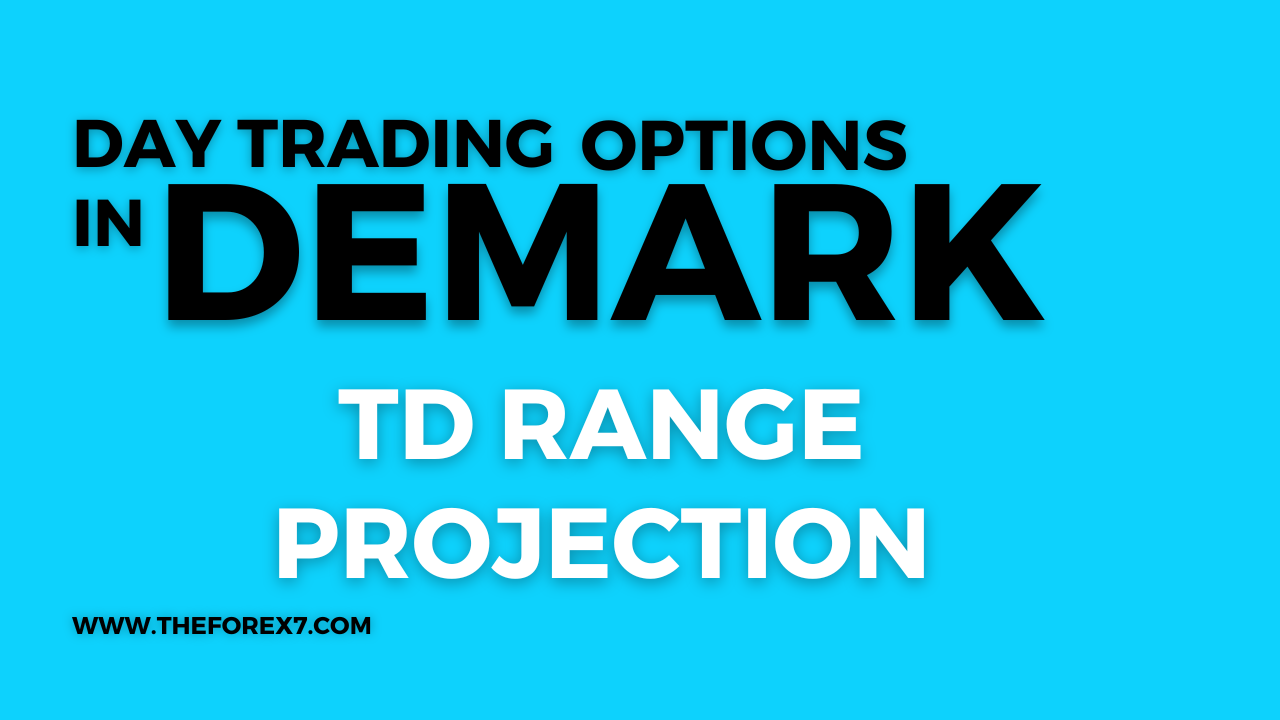Td Fib Range, Td Exit One
Td Fib Range, Td Exit One, Td Rebo Reverse, Td Camouflage, And Td Range Projection
Course: [ Demark on Day Trading Options : Chapter 9: Moving Forward In Reverse ]

The first four indicators, TD Fib Range, TD Exit One, TD REBO Reverse, and TD Camouflage, are of relatively recent vintage and are designed to capitalize on intraday price exhaustion.
TD FIB RANGE, TD EXIT ONE
The first four indicators, TD Fib
Range, TD Exit One, TD REBO Reverse, and TD Camouflage, are of relatively
recent vintage and are designed to capitalize on intraday price exhaustion. The
fifth indicator, TD Range Projection, is intended to provide a trader with a
means of effectively predicting the following trading day’s price range. In the
context of day trading options, these five indicators work well in establishing
levels of impending price reversals. Because they are contratrend in nature and
by design, they enable a trader to anticipate potential levels of support and
resistance, in the option as well as the underlying security.
TD FIB RANGE
As we indicated earlier, it’s easy for
a trader psychologically to jump upon an existing trend or participate with the
majority of traders, but it’s much more difficult to operate against the
prevailing trend by anticipating likely trend reversal levels. To overcome this
apprehension and accomplish this goal we researched what market characteristics
preceded or coincided with possible market turning points. What we came up with
was an indicator called TD Fib Range. TD Fib Range gets its name from utilizing
a ratio that is Fibonacci-derived. Fibonacci numbers are a number series where
each successive number in the series, when divided by its prior number in the
series, yields 1.618, and each number in the series, when divided by the
following number in the series, yields 0.618. TD Fib Range uses this Fibonacci
ratio—1.618—to calculate expected price movement termination levels. In our
research, we discovered that oftentimes when short-term market tops and bottoms
occur, daily price range movements added to or subtracted from the previous
trading day’s close either exceeded (1) 1.618 times the previous trading day’s
true price range or (2) 1.618 times an average of the previous three trading
days’ true price range. When price
reached these TD Fib levels, the market had a tendency to exhaust itself. When
the market trades outside of these points of exhaustion, an ideal low-risk
call-buying opportunity in the case of a price decline below the lower TD Fib
level, or an ideal low-risk put-buying opportunity in the case of a price
advance above the upper TD Fib level is presented at the close of the price bar
or the following price bar’s open. Oftentimes, the market records these TD Fib
Range moves in excess of 1.618 times the previous price bar’s true range or
1.618 times the average of the previous three trading days’ true price ranges
added to or subtracted from the previous trading day’s close coincident with a
news announcement. News releases have the effect of causing a noticeable
increase in volume, both in a security and its related option contract. Although
this indicator is intended to be applied to the underlying security, the
implications of a potentially exhaustive price move should be felt similarly by
any related options. Consequently, we suggest monitoring the underlying
security and once an indication of price exhaustion exists, then apply the
conclusions to the option, as well as the underlying security. Furthermore, we
strongly recommend TD Fib Range be used in conjunction with option-related
trend exhaustion indicators, such as TD % F and intraday TD Dollar-Weighted
Put-Call and Open Interest statistical information, to confirm short-term
market tops and bottoms.
TD Fib Range can be perfected by
including a series of qualifiers which will insure that the market is
sufficiently short-term oversold downside or short-term overbought upside to
exhaust a price move intraday or on the close. For example, one might require
the current price bar’s high to exceed upside 1.618 times the previous price
bar’s true range added to the previous close coincident with that same price
bar’s high exceeding both true highs three and four price bars earlier; or the
current price bar’s low to exceed downside 1.618 times the previous price bar’s
true range subtracted from the previous close coincident with that same price
bar’s low exceeding both true lows three and four price bars earlier. This rule
would provide an indication that the market may be sufficiently overbought or
oversold intraday to reverse prices at least for a short period of time. We
experimented with a series of preconditions and arrived at the following
additional qualifier. If the market exceeds upside 1.618 times the previous
trading day’s true price range, or 1.618 times the previous three trading days’
average true price range, added to the prior trading day’s close, then a
low-risk sell entry (put purchase) occurs at the close of the current day. A
secondary qualifier requires that the close of the current day must be greater
than all prior four closes. Conversely, if the market exceeds down-side 1.618
times the previous trading day’s true price range, or the previous three
trading days’ average true price range, subtracted from the prior trading day’s
close, then a low-risk buy entry (call purchase) occurs at the close of the
current day. Again, a secondary qualifier requires that the close of the
current day must be less than all prior four closes. If any of the requirements
are not fulfilled, a trader could expect the market to continue its move in the
direction of the breakout and no action is to be taken. Although we don’t
necessarily recommend its application, one could use the failure of the high
upside exceeding both the highs three and four price bars earlier for a
low-risk sell (put purchase), or the failure of the low downside exceeding both
the lows three and four price bars earlier for a low-risk buy (call purchase)
as a trend confirmation indication. In any case, other qualifiers can be
introduced and other daily range multipliers besides 1.618 can be substituted.
It is important for an option trader, when applying this indicator to the
underlying security, to confirm the results for the option as well by applying
the option rules discussed earlier, as well as TD % F and TD Dollar-Weighted
Put-Call and Open Interest.
TD Fib Range requires that a day trader
enter at the close of trading or at the succeeding trading day’s opening
provided that the open is in the direction of the anticipated trade. Obviously,
entry at the succeeding trading day’s opening is more reasonable if one is an
option day trader. The only requirement we recommend be introduced to perfect
this day trade is that the open occur in the direction of the trade; that is,
if a call option is to be purchased, then the open must be above the previous
trading day’s close, and if a put option is to be purchased, then the open must
be below the previous trading day’s close. This requirement is similar to the
qualifier included with indicator TD REBO Reverse. Also, a day trader can
elevate the TD Fib Range factor to 2.00 (double the previous day’s true price
range) instead of 1.618 to ensure that any entry that occurs on the TD Fib
Range breakout bar is not premature.
Figure 9.1 (Coffee March 1999) identifies those
occurrences in which TD Fib Range fulfills the preceding requirements.
Specifically, to identify a potential low-risk sell opportunity (put purchase),
161.8 percent is multiplied by the previous trading day’s true price range and
then added to that day’s close. The TD Fib Range

Figure 9.1.
March Coffee 1999 displays four times in which TD REBO Reverse identified
possible short-term price exhaustion levels.
level is plotted on the chart but the
low-risk selling opportunity (put purchase) exists not at that specific price
level marked on the chart with a hash mark, but rather at that day’s close.
Note that this example does not include an average of the previous three
trading days’ true ranges as an alternative value. Conversely, to identify a
low-risk buy opportunity (call purchase), 161.8 percent is multiplied by the
previous trading day’s true price range and then subtracted from that day’s
close. The TD Fib Range level is plotted on the chart but the low-risk buying
opportunity (call purchase) exists not at that specific price level marked on
the chart with a hash mark, but rather at that day’s close. Note that this
example does not include an average of the previous three trading days’ true
ranges as an alternative value.
Figure 9.2 (Dollar-Mark Cash) shows seven
instances over an 11-week period in which TD Fib Range spoke. In every instance
but one, the market responded the next trading day by following through in the
direction of the low-risk indications and the lone instance in which it didn’t
respond the next trading day, it did soon afterward. Once again the placement
of the rectangles on the chart is merely for purposes of illustration since the
low-risk entry levels are defined at the close that trading day.
The settings for TD Fib Range are
provided only for purposes of example. They can be changed or substituted with
other qualifiers. The measurements are all applied to the underlying securities
and the conclusions drawn are in turn applied to the related options. By
applying the settings we proposed initially, the low-risk entries are limited
to the close of the TD Fib Range breakout day or the following day’s open if it
opens in the direction of the breakout. Additionally, by expanding the factor
to 2.00 from 1.618, the opportunity exists for intraday entry and day trading.
When used independently or preferably in conjunction with other indicators
described in this book, timing of option purchases, whether they be calls or
puts, can be improved.
TD EXIT ONE
TD Exit One is an indicator that we
originally developed to exit outstanding market positions. Today, however, we
have found that this indicator is also effective in initiating market positions
in options and their underlying securities. Very simply, there are three
requirements for a TD Exit One low-risk buy (call purchase):
- The market must record three consecutive down close price bars, where the close one price bar ago is less than the close two price bars ago, the close two price bars ago is less than the close three price bars ago, and the close three price bars ago is less than the close four price bars ago.
- The current price bar’s open must be greater than the close one price bar ago and the current price bar’s low must trade less than the close one price bar ago.
- The price range one price bar ago—chart high to chart low—must be greater than the true price range two price bars ago—true high to true low.

Figure 9.2.
The Cash German Mark recorded four instances in which price exceeded the TD
REBO Reverse momentum thresholds. In each case, the following trading day’s opening
provided an opportunity for a day trader to assume a position and enjoy the
inception of a trend reversal.
A low-risk buy (call-buying) entry
occurs one tick less than the close one price bar ago; however, in some
instances, the low-risk buy (call-buying) entry can also appear at the low one
price bar ago. Consequently, a dual-entry possibility can exist depending upon
one factor, referred to as TD Differential (downside). The distinction between
the two entries arises from the comparison of the price difference between the
low and the close of the previous price bar versus the low and the close two
price bars ago. If the difference between the close one price bar ago and the
low one price bar ago is greater than the difference between the close two
price bars ago and the low two price bars ago, then the low-risk buy
(call-buying) level is one tick below the previous price bar’s close; and if
the difference between the close one price bar ago and the low one price bar
ago is less than- the difference between the close two price bars ago and the
low two price bars ago, then the low- risk buy (call-buying) level is one tick
below the previous price bar’s low. Now there will be instances when the market
will fail to decline below either reference price level—the close one price bar
ago or the low one price bar ago—and to avoid missing these trading
opportunities, a trader should buy a partial position at the current price
bar’s open. At that time, it may be prudent to purchase one-third of the
intended call option position at the opening and the balance once price
declines below either reference level.
Conversely, there are three requirements
for a TD Exit One low-risk sell (put purchase):
- The market must record three consecutive up close price bars, where the close one price bar ago is greater than close two price bars ago, the close two price bars ago is greater than the close three price bars ago, and the close three price bars ago is greater than the close four price bars ago.
- The current price bar’s open must be less than the close one price bar ago and current price bar’s high must trade greater than the close one ago.
- The price range one price bar ago—chart high to chart low—must be greater than the true price range two price bars ago—true high to true low.
A low-risk sell (put-buying) entry
exists one tick greater than the close one price bar ago; however, in some
instances, the low-risk sell (put-buying) entry can also appear at the high one
price bar ago. Consequently, a dual-entry possibility can exist depending upon
one factor, referred to as TD Differential (upside). The distinction between
the two entries arises from the comparison of the price difference between the
high and the close of the previous price bar versus the high and the close two
price bars earlier. If the difference between the high one price bar ago and
the close one price bar ago is greater than the difference between the high two
price bars ago and the close two price bars ago, then the low-risk sell
(put-buying) level is one tick above the previous price bar’s close; and if the
difference between the high one price bar ago and the close one price bar ago
is less than the difference between the high and the close two price bars ago
versus the difference between the high and the close two price bars ago, then
the low-risk sell (put-buying) level is one tick above the previous price bar’s
high. Now there will be instances when the market will fail to advance above
either reference price level—the close one price bar ago or the high one price
bar ago—and to avoid missing these trading opportunities, a trader should sell
(purchase a put) at the current price bar’s open. At that time, it may be
prudent to purchase one-third of the intended put option position at the
opening and the balance once price advances above either reference level.
Figure 9.3 (S&P 500 December 1998) displays
various instances in which a series of down or up closes are punctuated with a
price exhaustion move which develops into a price reversal. On the chart, price
hash marks are used to indicate the low-risk buying (call-buying)
opportunities. There are four instances over a relatively short period in which
TD Exit One successfully identified trend exhaustion and price reversal levels.
In each of these instances, the most recent of the series of down closes or up
closes is exceeded intraday the next trading day, enabling a trader to enter
the market. As you can see, only the second example—September 1—had its
low-risk call-buying level below the prior trading day’s low due to the failure
of TD Differential. The other three had their low-risk call-buying entry levels
a tick below their respective trading day’s closes because of TD Differential.
Figure 9.4 applies TD Exit One to a daily Intel
chart. TD Exit One is designed to identify potential price exhaustion zones.
This chart displays two examples of this indicator for INTO. Once three consecutive
up closes or down closes are recorded, the market is vulnerable to a price
reversal. If three successively lower closes are recorded, the next price bar’s
opening price must be above the most recent (previous price bar’s) close and
that same price bar’s low must be less than or equal to that close. Conversely,
at a potential price exhaustion peak once three successively higher closes are
recorded, the next price bar’s opening price must be below the most recent
(previous price bar’s) close and that same price bar’s high must be greater
than or equal to that close. The first instance was a low-risk sell
(put-buying) indication and the market recorded a sharp one day decline. In the
second instance, the market recorded a low-risk buy (call-buying) indication
but did not respond until the next trading day. The next day the market
responded with a gap opening upside to establish market equilibrium which was
suppressed the previous trading day. The latter example illustrates that even
though a day trader may have suffered a loss, had the trader held the position
overnight, it would have proved profitable. An indication that a day trade may
be unprofitable exists whenever the trade occurs late in the trading day since
time is an important factor. Our recommendation is that if day traders are
determined to trade within the last two hours of trading, they should be
prepared to extend their holding periods until the next trading day.

Figure 9.3.
This is a chart of the December 1998 S&P 500. TD Exit One must be preceded
by three consecutive down closes or three consecutive up closes. In this chart,
all examples are low-risk buy possibilities.

Figure 9.4. This chart of Intel illustrates two examples of TD Exit One. The first is a day trading opportunity for a low-risk selling opportunity and the second presents a low-risk buying opportunity.
The December British Pound 1998 futures
contract (Fig. 9.5) identifies an example
of a TD Exit One low-risk buy. Three consecutive down closes were recorded and
the open of the next trading day was above the prior day’s close. Once the low
traded less than or equal to the prior trading day’s close, a low-risk call buying
opportunity occurred. Again, this indicator works well when applied to a daily
chart and can be used to predict continued movement of the TD Exit indication.
For that reason, we suggest one consider holding one’s position longer than the
close if other indicators confirm. Other qualifiers can be introduced to
perfect trades. For example, the trading range of the most recent of the three
consecutive down or up closes must be greater than the prior trading day’s
price range.
Demark on Day Trading Options : Chapter 9: Moving Forward In Reverse : Tag: Option Trading : Td Fib Range, Td Exit One, Td Rebo Reverse, Td Camouflage, And Td Range Projection - Td Fib Range, Td Exit One



